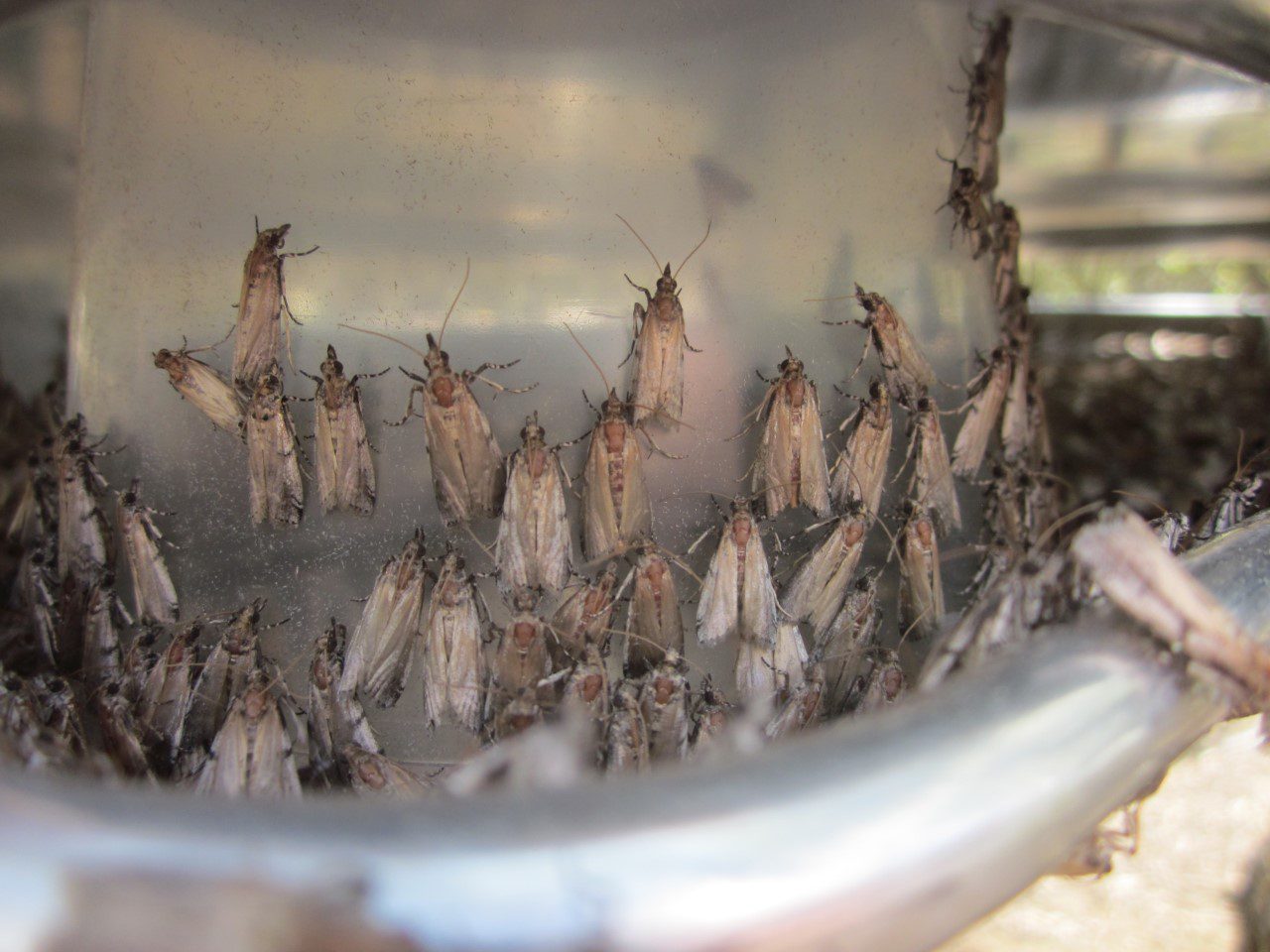The first large-scale replicated trials to test the effect of mass-produced sterile navel orangeworm (NOW) moths on reduction of native NOW populations in almond orchards was carried out in 2021, furthering research funded by the pistachio and almond industries on the sterile insect technique for NOW.
Houston Wilson, a cooperative extension specialist with UC Riverside, said the large-scale field trials in 2021 took place mid-June in paired almond orchards with and without weekly sterile NOW releases. Another set of large-scale trials evaluated sterile NOW dispersal in pistachio orchards. Wilson, who is based at the UC Kearney Agricultural Research and Extension Center, carried out these experiments in collaboration with Chuck Burks, a research entomologist with USDA-ARS.
In the almond blocks where sterile NOW were released, Wilson reported lower wild NOW populations, but there was no clear difference in NOW egg deposition or crop infestation.
“While the introduction of sterile NOW ultimately didn’t lead to changes in almond crop damage, we did observe some fairly consistent reductions in the wild NOW population, which was interesting.”
“This is year one of a multi-year study, so we’ll see how this plays out when we repeat the experiment this summer.”
The sterile insect technique makes use of large numbers of sterilized NOW which, when released as part of an area-wide integrated pest management program, will limit successful reproduction of wild NOW and lead to an overall reduction in pest insect numbers. Key to the success of any SIT program is the ability to produce large numbers of healthy (but sterile) insects, which presents multiple challenges.
The sterile NOW project, which was initiated by the pistachio industry in 2016, makes use of a USDA facility in Arizona that was initially developed to mass produce and sterilize pink bollworm moths.
“Basically, we’re trying to retrofit a facility and process that was designed for another species of moth to produce large numbers of sterile NOW that perform well in the field,” Wilson said. He added that a key challenge for any SIT program is to determine how to most effectively rear, sterilize, transport and release your target organism.
Over the past five years, Wilson and Dr. Burks have been working to systematically isolate, identify and correct various bottlenecks in the current sterile NOW production, transport and release process. Wilson said forward progress in this process has been made.
Recovery of sterile male NOW has been improved due to changes in the release method. Wilson and Burks have also demonstrated that sterile females can indeed attract and mate with wild NOW, and at the same time, sterile males can locate and mate with wild-type females. Wilson added that collaboration with the USDA mass-rearing facility staff has helped them further identify some of the optimal procedures for producing and delivering NOW moths as well.
“To have the best chance of success, we’re going to need better estimates of the overall quantity of sterile moths that are needed as well as optimal timing and locations for their use. With more than two million acres of tree nuts in the state, it’s imperative that we have a way to prioritize when, where and how many sterile NOW to release” Wilson said.
The California Pistachio Research Board and Almond Board of California are now funding an ecological and economic scenario modeling effort to better estimate the optimal frequency of releases and determine moth production needs. The modeling will be carried out for different growing regions and paired with an economic analysis to determine industry needs for the future.

Cecilia Parsons
Cecilia Parsons has lived in the Central Valley community of Ducor since 1976, covering agriculture for numerous agricultural publications over the years. She has found and nurtured many wonderful and helpful contacts in the ag community, including the UCCE advisors, allowing for news coverage that focuses on the basics of food production.
She is always on the search for new ag topics that can help growers and processors in the San Joaquin Valley improve their bottom line.
In her free time, Cecilia rides her horse, Holly in ranch versatility shows and raises registered Shetland sheep which she exhibits at county and state fairs during the summer.
















